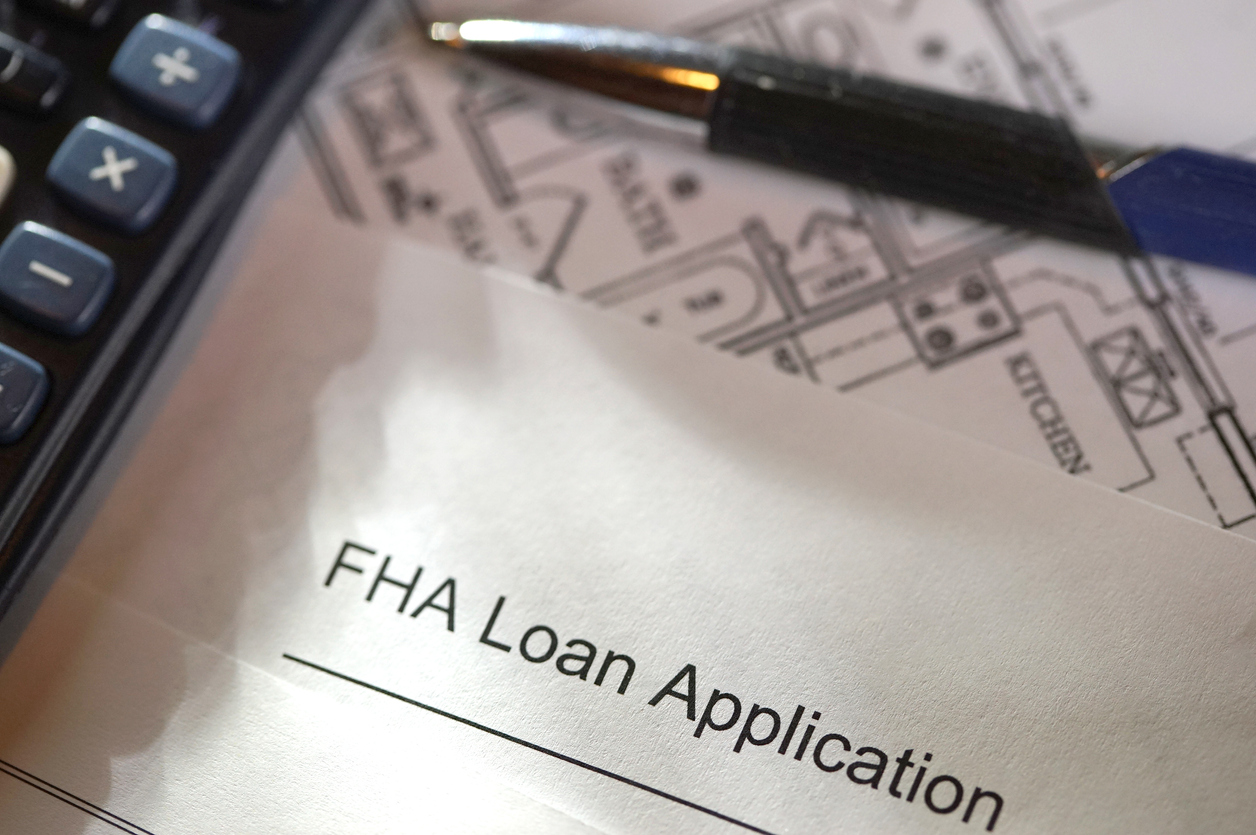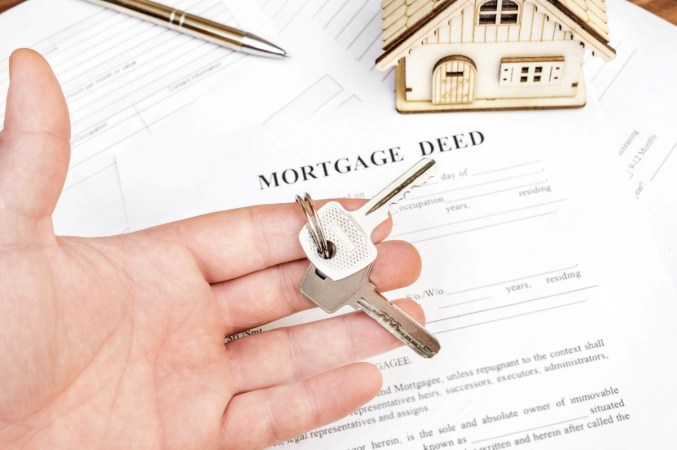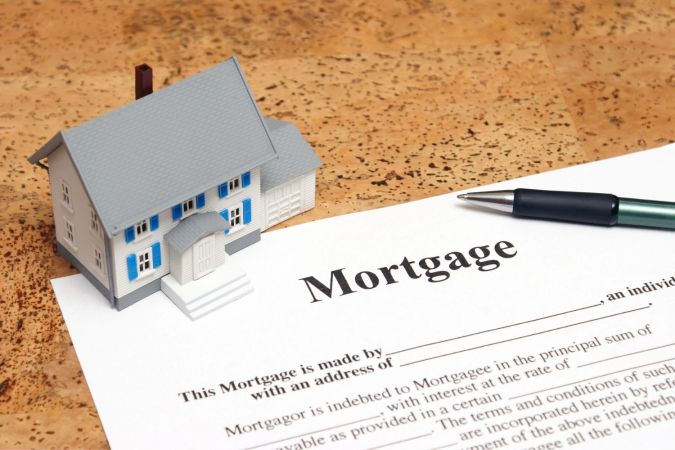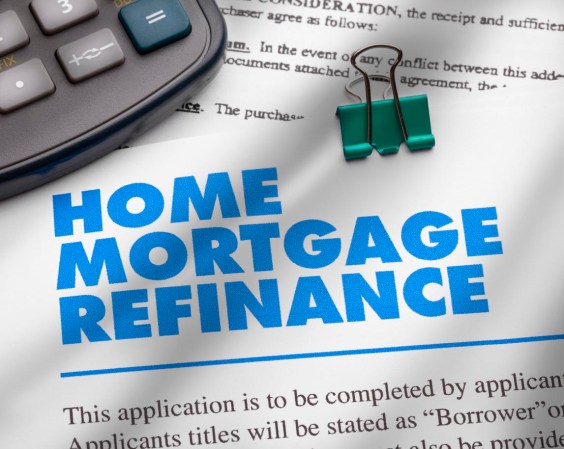We may earn revenue from the products available on this page and participate in affiliate programs. Learn More ›
Last year, American property owners earned more from real estate appreciation than they did at their jobs. This startling statistic underscores how real estate has been a continuous wealth builder despite a fluctuating market. Owning multiple cash-flowing units is a surefire way to attain financial independence. However, getting started is a stumbling block for many. With interest rates rising, home buying and real estate investment financing are more challenging today than they were even a year ago.
If you’re interested in investing in real estate, however, don’t throw in the towel. There are simple ways for novices to get a foot on the real estate investment ladder that don’t require experience—or a lot of money.
RELATED: No Money? Here’s How You Can Still Flip a House
1. Take Out an FHA Loan on a 2- to 4-Unit Property

An FHA loan is a type of government-backed lending for new homeowners that allows them to start with little as a 3.5 percent down payment and is forgiving of less-than-perfect credit scores. The good thing about FHA loans is that they apply to single and 2 to 4 unit homes, as long as the borrower intends to live in one of the units. Living in one unit while renting the others is a technique known in investor circles as “house hacking.” It allows homeowners to live rent-free, or nearly so, by using the tenant’s rent to offset their mortgage payment.
Pros
- A low downpayment and average credit score for easy qualifying.
- The tenants pay the mortgage.
- The homeowner is onsite to handle property management.
- It gives the homeowner financial security, tax depreciation, and a place to live.
Cons
- The homeowner lives in the same building as tenants and will most likely take on property management responsibilities.
- FHA loans require great lender scrutiny and inspections.
- Homeowners will have to pay private mortgage insurance (PMI) if they put down less than 20 percent, which they can refinance from once the value increases and the equity exceeds 20 percent.
RELATED: 8 House Flipping Mistakes to Avoid at All Costs
2. Cash-Out Refinance Your Personal Home and Rent It Out

If your home’s value increases significantly, you can do a cash-out refinance rather than sell it. You can then use the money to buy an investment property or a new personal residence and rent out your former home.
Pros
- If you have lived in your home for less than 2 years, renting it out means you won’t be liable for the capital gains taxes that would apply to selling the home.
- An investment property allows cash flow and depreciation.
- You can make repairs on your residence while living in it to get it rental-ready.
Cons
- Moving from a personal residence you’ve lived in for such a short time can be unsettling.
- Taking cash out to refinance will increase your monthly payments, and your debt.
RELATED: The 10 Best Cities in the U.S. for House Flipping
3. Sell Your Home After Living in It for 2 Years

Many people use this method to accrue real estate wealth by living in a home for 2 years (or 2 of the previous 5 years). During this time, they renovate it and then sell it. Because they have lived in the home for more than 2 years, they do not have to pay capital gains tax on the profit after the home sells.
Pros
- Pay no capital gains taxes on the profit after the sale.
- You have a place to live while you are investing.
Cons
- Your living quarters are under construction or renovation.
- It’s unsettling to have to move homes continually.
RELATED: How Much Does It Cost to Flip a House?
4. Try the BRRRR Method

This has become the gold standard for novice and seasoned real estate investors. The steps are simple: You buy a fixer-upper using either hard money or a private loan. You proceed to renovate the home and then rent it out. Once rented, you refinance the property, pulling out your original downpayment (hard money lenders usually require 10 to 20 percent) and then repeat the process, thus recycling your money. BRRRR stands for:
- Buy
- Rehab
- Rent
- Refinance
- Repeat
Pros
- Unlike most mainstream banks, hard money lenders are willing to take loans on homes in poor condition.
- This method allows you to recycle your down payment as many times as you like.
Cons
- Hard money loans carry high interest rates.
- You will need to renovate a home, which requires a reliable contractor or handy DIY skills (and time).
- You will need to refinance the home into a conventional mortgage after the renovation, so it needs to hold significant equity to pull your money out.
RELATED: How to Flip a House
5. Find Private Money

One of the easiest ways to get started in real estate is to circumvent the banks and hard money lenders and secure private money.
Private money can come either from a recognized lender (in which case the line blurs between that and a hard money lender) or from a family member. The advantage of getting financing from a family member is more flexible loan terms. With cash in hand, you can attempt any of the methods listed above. Just be sure to return the original sum you borrowed immediately after refinancing or selling the property (even if it is from a family member). Building a reputation as an honest, trustworthy borrower as you seek to continue your investing career is essential. It can lead to you being able to borrow more money as you grow.
Pros
- This borrowing method circumvents banks and doesn’t show up on a credit report.
- The loan terms and interest rates are often more flexible than they are with hard money loans.
- You can often pay back a private money lender at the end of the process, when the house sells or refinances, instead of making monthly payments.
Cons
- If you are borrowing from a family member and the project goes wrong, it could damage a relationship.
- The interest rate could be higher than that of a regular mortgage, depending on the lender.
RELATED: The 70% Rule in House Flipping, Explained
Final Thoughts

There is an element of risk tied to any investment, including real estate investment financing. Safeguarding the amount of money you invest and how you invest it will help offset your liability. These tried and tested methods minimize your initial investment and offer a way to make it back quickly. However, you must screen your tenants meticulously, choose a good property to invest in, and know your exit strategy before purchasing a property.
It’s also important that you are able to pay the mortgage should the worst-case scenario occur and a tenant stops paying their rent. That’s why before undertaking any type of investment, you should have a slush fund of savings built up to see you through potential hiccups.









